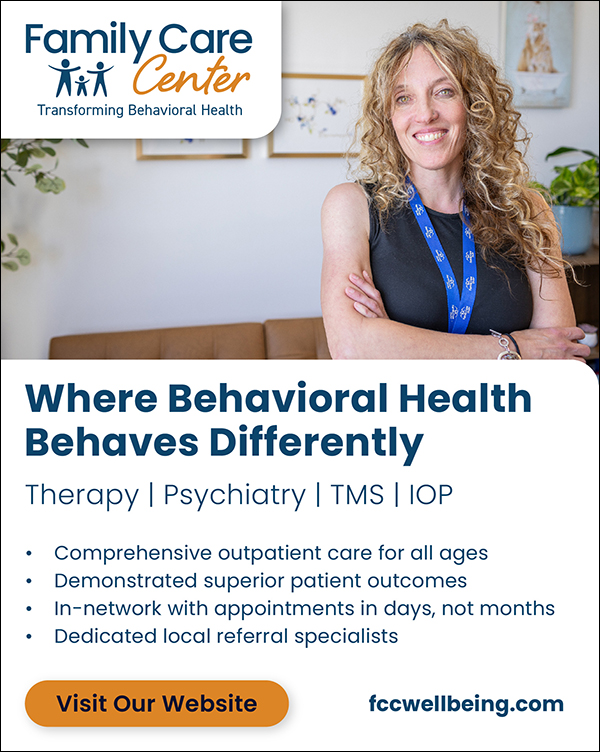Anxiety and depression affect physiology, cognition, behavior, and social functioning. Addressing only one domain—prescribing a medication without psychotherapy or offering therapy without coordinated pharmacologic care—often leaves residual symptoms and increases the risk of relapse.

Whole‑person care aligns clinical interventions with each patient’s biological, psychological, social, and spiritual needs. In practice, this means recognizing how disrupted sleep, fatigue, pain, and gastrointestinal complaints can obscure the primary diagnosis; how rumination, anhedonia, and impaired concentration drive functional impairment; and how isolation, role conflicts, financial stressors, and stigma slow engagement and recovery. When teams approach these dimensions together, patients move more predictably toward remission.
Beyond Co-Location: What “Multidisciplinary Care” Means
Multidisciplinary care is more than sharing a hallway. It is a coordinated model with shared goals, information, and accountability for outcomes. In a mature program, therapists, psychiatrists, psychiatric PAs/NPs, and care coordinators work from a common record and confer routinely, so treatment plans stay aligned.
Measurement‑based care (MBC), which uses patient data to inform treatment goals and progress, is baked into the workflow. PHQ‑9, GAD‑7, and other patient-reported outcome scores are collected at baseline and regularly throughout treatment, and trajectories—not isolated snapshots—drive timely adjustments. Warm handoffs and rapid access tie the model together, allowing same‑week starts and minimizing the friction that otherwise leads to no‑shows and dropouts. When indicated, escalation to intensive outpatient programs (IOPs) or transcranial magnetic stimulation (TMS) happens inside the same system, preserving continuity and trust.
What Evidence Shows
Across dozens of studies, collaborative and other multidisciplinary models outperform usual care on response and remission for depression and anxiety. Programs that pair team‑based care with MBC demonstrate better adherence and fewer delays in treatment adjustments. Economic evaluations consistently show favorable cost‑effectiveness and, in some settings, reductions in total cost through fewer emergency department visits and hospitalizations.
Just as importantly, a multidisciplinary approach reduces access barriers by smoothing referrals and creating stepped‑care pathways within one coordinated environment. The takeaway for busy clinicians is straightforward: organizing teams, data, and timely escalation.
Why One Location Matters for Patients and Operations
Traditional models ask patients to coordinate therapy, medication, and advanced treatments across different sites and systems. Each handoff introduces delay and risk of attrition.
By contrast, a single multidisciplinary setting lowers logistical barriers, aligns clinical messaging, and allows the team to escalate care promptly when outcome measures and other indicators show insufficient progress. Safety also improves; a shared record and regular team huddles make it easier to monitor suicidality, reconcile medications, and track adverse events without duplication or gaps.
Family Care Center Outcomes
At Family Care Center, multidisciplinary behavioral health care is the standard. Over 80% of patients treated for depression or anxiety report clinically significant improvement within six months, based on PHQ‑9 and GAD‑7 monitoring. Participants in its IOP and TMS programs show particularly strong gains, with over 90% demonstrating reductions in depressive symptoms and parallel improvements in anxiety and PTSD measures.
Patients who receive coordinated care across modalities—psychotherapy plus medication management with the option to add TMS—improve more than those treated in a single modality. A Family Care Center outcomes analysis of 2,160 adults links the multidisciplinary model to higher engagement, stronger adherence, and meaningful symptom reduction over six months.
A Patient Journey
Consider the difference between two pathways.
- In the first, a patient begins therapy but must seek medication elsewhere. Appointments are weeks apart, communication between clinicians is piecemeal, and progress plateaus.
- In the second, the same patient completes a single intake, begins therapy, and meets a prescriber in the same week. The team shares notes, reviews PHQ‑9 and GAD‑7 trends, and adjusts the plan as needed. When symptoms resist improvement, TMS or IOP are introduced within the same care system. The process is cohesive and supportive, and the patient can focus on healing rather than logistics.
Implementation Essentials for Healthcare Teams
Successful programs are deliberate about cadence and roles. MBC becomes routine when scores are collected at baseline and at a meaningful interval and displayed in the EHR. Access improves when warm handoffs are built into intake, so new therapy starts are paired with a near-term prescribing appointment.
Brief weekly case reviews for patients enrolled in TMS and IOP keep everyone aligned on higher-acuity cases. They also create a predictable forum for problem‑solving. Continuity strengthens when after‑visit summaries are shared across the team and medication reconciliation is visible in psychotherapy notes.
The New Standard—Built on Teamwork
Multidisciplinary behavioral health aligns clinical best practices with operational sensibility: the right care, at the right time, by the right team. As more systems adopt multi‑disciplinary models, patients experience symptoms and durable recovery, and clinicians gain a repeatable framework that improves outcomes, experience, and value.
Christopher Ivany, MD, is a Psychiatrist and the CEO of Family Care Center.





